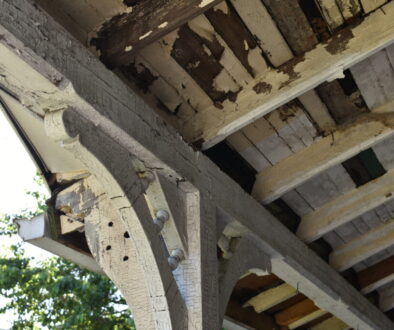Significance in History Heritage, News 01/03/2023 by Alfie
When it comes to historic buildings, one of the most important concepts in UK conservation policy and ethics is ‘significance’. Put simply, significance is what a building means: what stories it tells us about the history of society, culture, religion, economics, and of course architecture itself. The ability to tell all these different stories is fundamentally why a building is worth preserving.
To make this broad topic easy to digest Historic England has given us a handy framework of different types of heritage value that can be used to break down significance. These are communal value, aesthetic value, evidential value, and historic value.
It is often essential to think in terms of these separate values to give a full understanding of a building’s importance. We all have different academic and practical backgrounds, which can otherwise skew our attention towards interests us in particular. The appraisal of significance should be done as objectively as possible.
Yet when we take a longer view of history, it becomes clear that ‘significance’ and value has not always been judged by the same criteria. The urgent need to scrutinise a building according to these criteria can be traced to the 1946 and 1947 Town and Country Planning Acts which created the concept of a listed building. A listed building is not something that one ‘likes’ because of taste, or one immortalises in words only, but something afforded legal protection. Like human beings, these buildings are shielded by criminal law and the police: not civil law which protects physical and intellectual property.
Even in the decades after 1947, many buildings now deemed valuable were destroyed. High Victorian architecture is a classic example of a style maligned by mid-century tastes. Later, it was Brutalist architecture which met the wrecking ball. From the 50s to the 70s, whole streets of Georgian and Victorian cities were demolished so that highways could be widened (which only increased the demand for those highways and the traffic the lanes were supposed to solve). What today is highly ‘significant’ was once ‘insignificant’ enough to be destroyed.
My academic paper published last month looked much further back in time for ideas of value in architecture. I wanted to understand what was deemed a ‘good’ building many centuries before the ‘four types of significance’ and ‘listing’ came about. Indeed, the period I was writing about was before self-conscious architectural theory and writing—for its own sake—began to appear. This is the medieval period, before the Renaissance. When that came about, the likes of Leon Battista Alberti (a Florentine intellectual) created a cottage industry of architectural writing, following the template set out by the Roman architectural theorist Vitruvius.
For medieval England, I had to look elsewhere to work out what was considered ‘significant’ about a building. The source materials I used were practical in nature, even mundane. They were building contracts: agreements between a builder (usually a mason or carpenter) and the commissioning patron who paid for the work. I scoured these legal agreements (written variously in Latin, Old French, and Middle-English) for discussions or references to quality.
What I found was surprising: no references to religious iconography for a start, which is perhaps odd in the so-called ‘Age of Faith’. There was no political reasoning either, no ‘communal’ values, and certainly not a recognition of ‘evidential’ or ‘historical’ value in existing buildings.
Where existing buildings were discussed, however, they were used in a very exacting manner. Namely, existing buildings were selected as ‘prototypes’ in the highest-status project, and they were to be emulated, or ideally, ‘bettered’. If a building can be ‘better’ then it clearly has been chosen for some kind of objective value. In fact, it simply represents value without it needing to be explained any further. The values were aesthetic and functional. Every ‘prototype’ was chosen for a particular reason, and they chose particular bits of buildings. Individual windows would be emulated, or individual doorframes. Why? Because of their moulding profiles, or proportions—in a word, their design.
Conservation professionals need a clear and stable framework of significance for their day to day work. But we should also acknowledge that, in the grand scheme of things, ‘significance’ is a slippery and mutable value, hard to pin down, and one that shouldn’t be stereotyped according to what we expect of a particular era. The example in my paper is just one instance of an unexpected type of ‘significance’ in history—turning the clock backwards to antiquity, and forwards to modernity, there will be many more.





